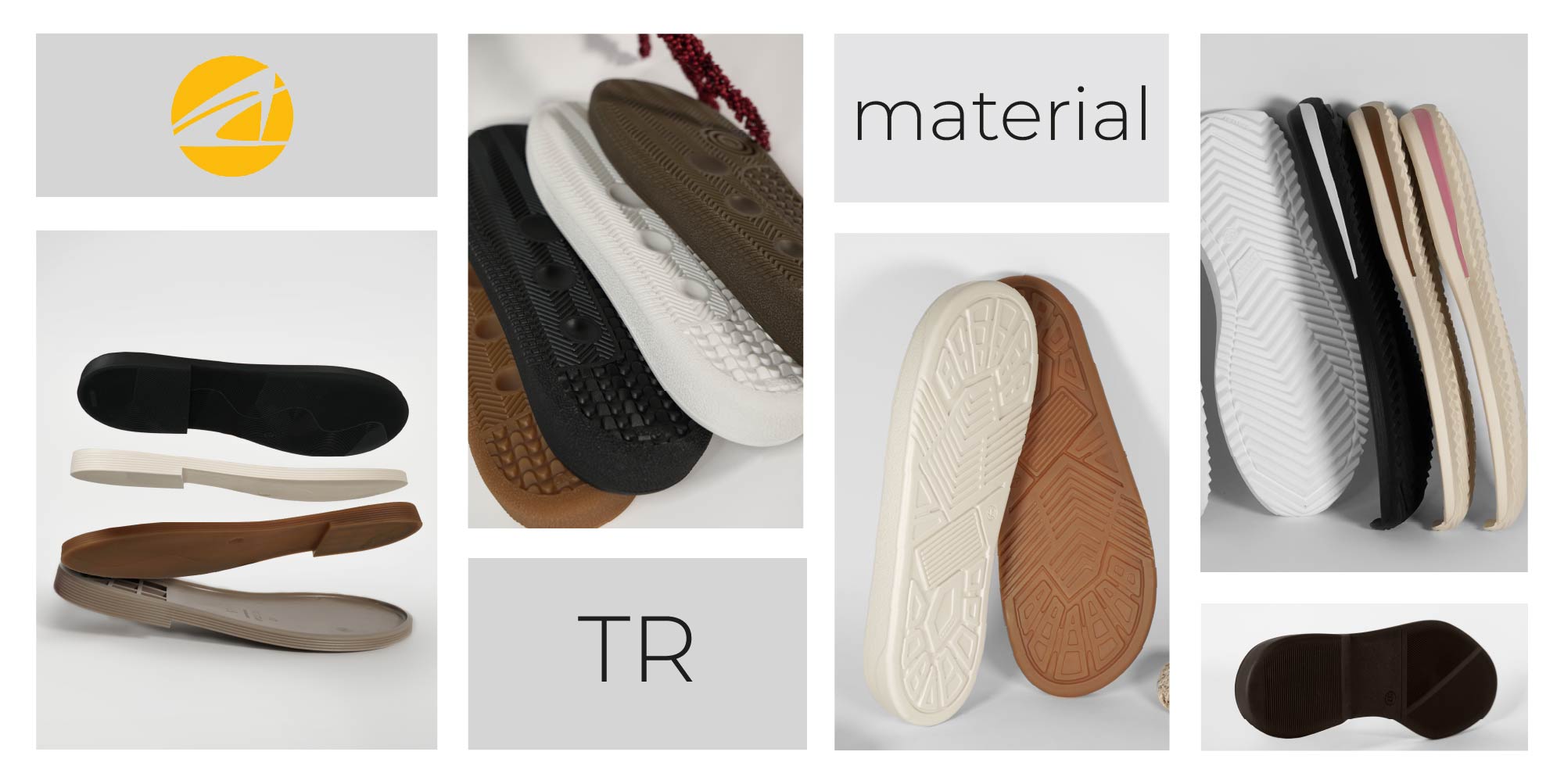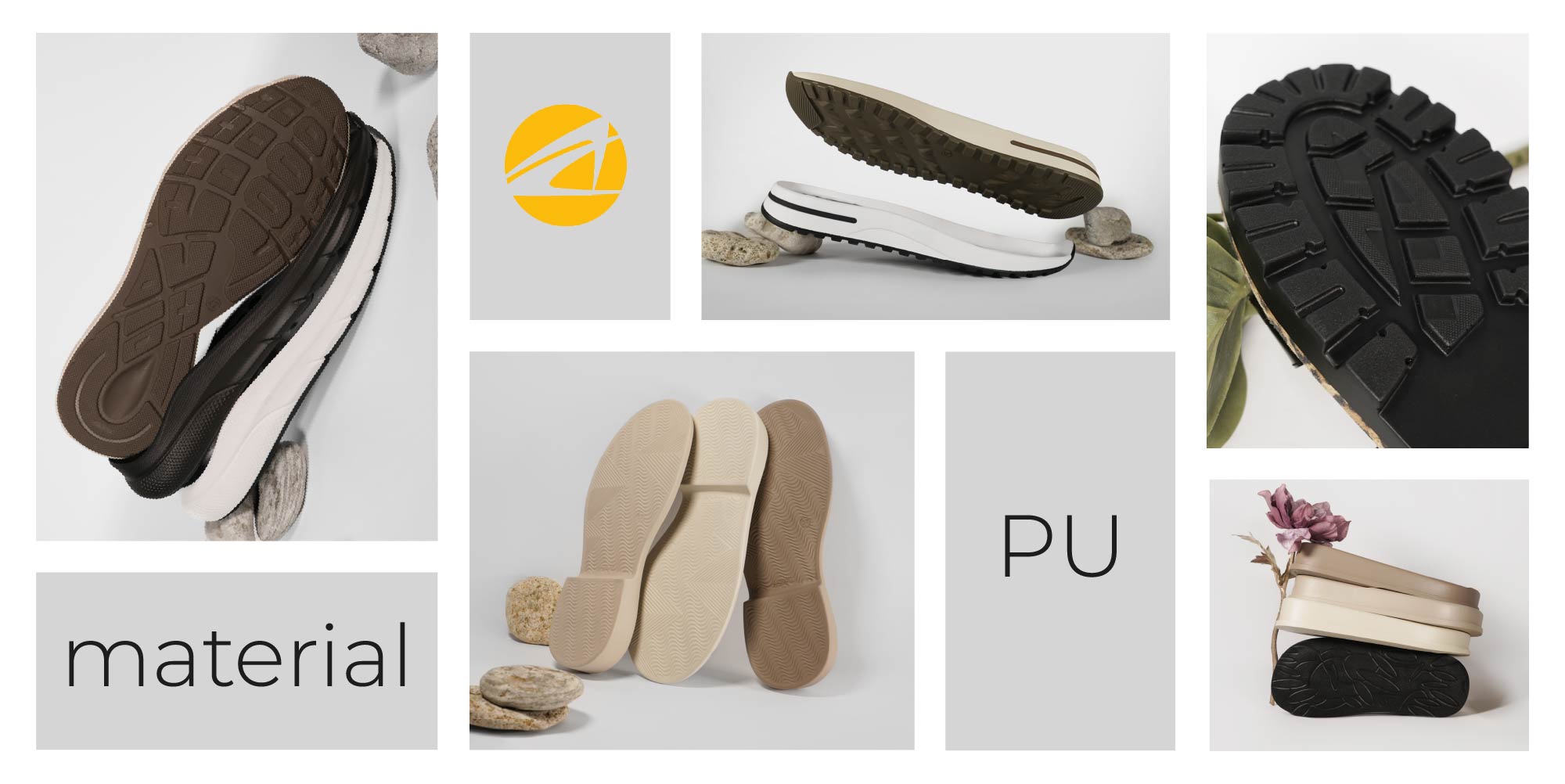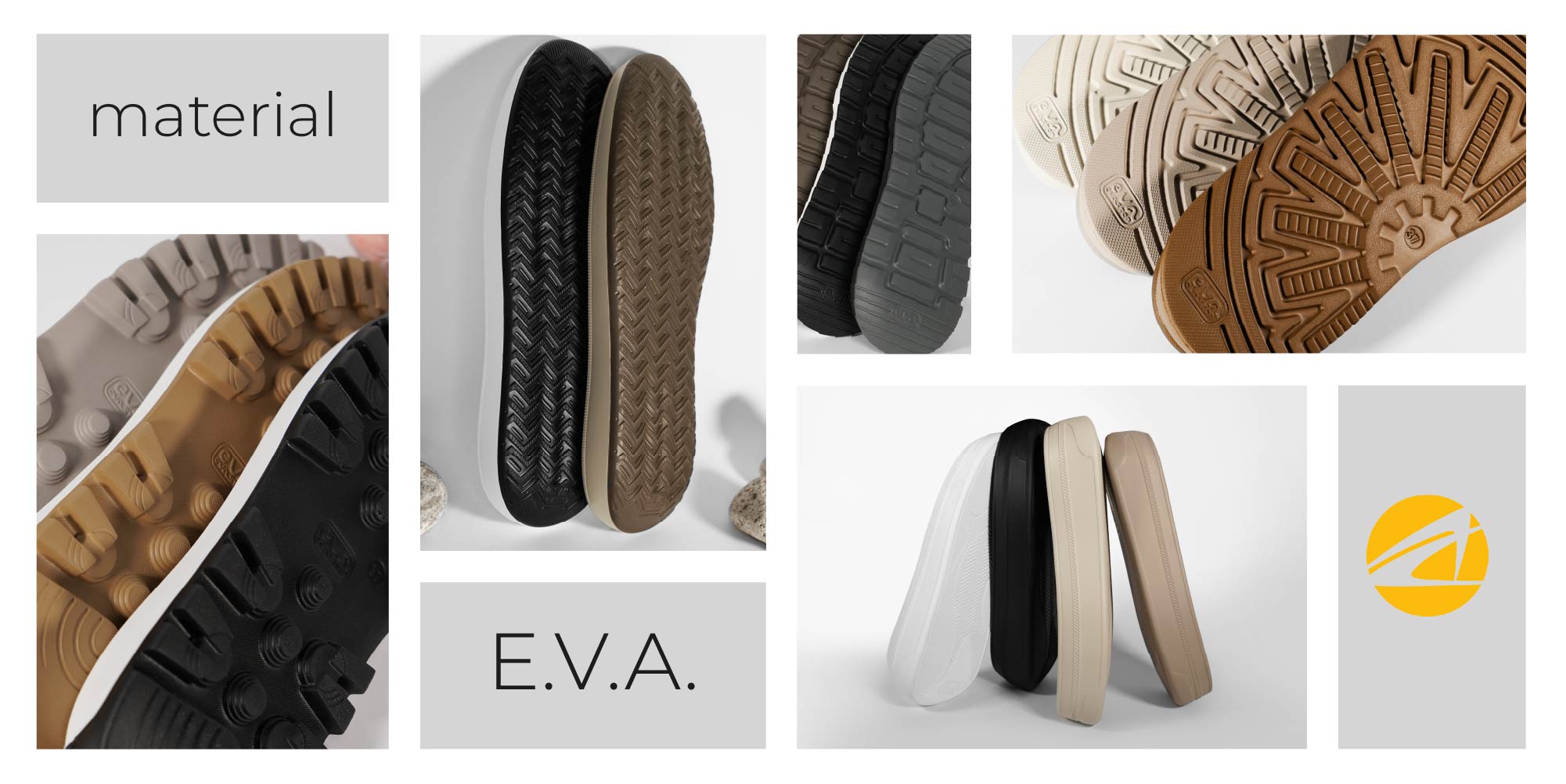Overview of Popular Materials for Creating Women's and Men's Soles at AC-Step!
Choosing high-quality material plays a key role in creating women's soles. A sole made of reliable material ensures a long lifespan for footwear. Low-quality materials may wear out faster, crack, or erode, leading to the need for frequent shoe replacement. Additionally, the sole material should provide good traction on various surfaces to prevent slipping. This is especially important in winter or rainy weather. AC-Step offers a wide range of soles made from different materials, whose pros and cons are discussed below.
 Thermo Rubber (TR)
Thermo Rubber (TR) - a practical, non-slip material. The characteristics of the material and the sole manufacturing technology allow its surface layer to be monolithic, making it durable and capable of retaining heat well. The material provides good traction on surfaces, which is crucial in the autumn-winter season.
Pros:
- Thermo rubber has a high degree of frost resistance (up to -50°C);
- The material is strong and provides good traction on surfaces;
- Thanks to the material properties and sole manufacturing technology using TEP (thermoplastic elastomer), its surface layer is monolithic, ensuring durability, while the internal volume is monolithic, effectively retaining heat;
- Durability, resistance to wear and weather conditions.
Cons:
- Thermo rubber has a high density compared to other materials, making it heavier since a large mass is concentrated in a small volume;
- Thermo rubber belongs to thermoplastics, which soften when heated. As the temperature rises, molecular bonds weaken, causing the material to lose rigidity and deform.
A two-color sole is cast in a mold layer by layer, starting from the bottom. This process requires more time and special equipment.
A three-color TR sole is made similarly: first layer, curing, second layer, curing, third layer, curing, sole removal, and defect inspection.
 Polyurethane (PU)
Polyurethane (PU) - a durable material characterized by lightness, elasticity, low abrasion, and high strength. PU production is a complex chemical process of mixing several components at a specific temperature.
AC-Step uses polyurethane of the following types:
- Summer - a type of hard polyurethane used for soles with high heels and wedges;
- Winter - soft. This PU is used for making boots, ankle boots, and half-boots;
- Wedge polyurethane - lighter and stiffer than summer PU. It is used to create thinner and more elegant heels and wedges;
- S-raw material - 20% lighter than regular PU, more elastic, withstands temperatures up to -20°C;
- Z-raw material - more elastic and soft compared to S-raw material while maintaining the same weight.
Pros:
- Polyurethane is lightweight, making shoes comfortable for prolonged wear;
- PU soles are wear-resistant, ensuring durability even with frequent use;
- PU has excellent cushioning properties, making walking comfortable by reducing impact and lowering stress on feet and joints;
- This material has good thermal insulation properties, keeping shoes warm in cold weather;
- PU soles are resistant to chemical exposure, not deteriorating from oils, gasoline, and some other chemicals, making them ideal for work footwear.
Cons:
- Susceptibility to prolonged moisture exposure. Over time, water can degrade polyurethane, especially if the material quality is low;
- PU soles may deteriorate over time. If shoes are not used for long periods, the soles can begin to crumble or crack due to material hydrolysis;
- Polyurethane can deform or weaken under extreme high or low temperatures.
Polyurethane soles - a great choice for those valuing lightness and comfort. However, to avoid sole deformation issues, choosing verified manufacturers and quality materials is essential.
 EVA (ethylene-vinyl acetate)
EVA (ethylene-vinyl acetate) - a lightweight and resilient material similar to foamed rubber. Its main advantage is its low weight. EVA is 4 times lighter than PVC, 3 times lighter than TEP, and 1.5 times lighter than PU.
Pros:
- EVA bends without breaking, maintaining elasticity, resilience, and cushioning properties even at low temperatures;
- Resistant to chemical substances on roads (oils, gasoline);
- Good thermal insulation due to its porous structure containing numerous microscopic air bubbles, which help retain heat;
- The sole does not absorb moisture, making shoes waterproof and quick-drying.
Cons:
- Low puncture resistance due to its porous nature;
- Tendency to deform over time, especially under heavy use;
- Poor grip on wet, smooth, or slippery surfaces.
Leatherboard Sole - a type of block sole made from sheets. This type of sole can have a welt.
Types of Leatherboard
- Summer (3mm thick) - smooth, with tread relief formed during embossing or laser engraving;
- Demi-season - leatherboard with a pre-made tread, 3.5mm thick;
- Demi-season with welt - demi-season leatherboard with an attached welt, which protects shoes from moisture and visually increases sole thickness;
- Summer with welt - in this type of leatherboard, the welt serves a decorative function.
Pros:
-
The material is quite lightweight, making shoes comfortable for prolonged wear;
-
A leatherboard sole retains flexibility even at low temperatures, making it suitable for demi-season footwear;
-
Leatherboard is made using recycled materials, making it more environmentally friendly compared to some synthetic materials;
-
This material is cheaper than natural leather, making footwear more affordable.
Cons:
-
Leatherboard soles tend to absorb moisture, which can be problematic in high humidity conditions;
-
Although durable, the material is less wear-resistant than natural leather and does not retain its appearance as well;
-
Leatherboard does not handle contact with aggressive chemicals such as solvents or oils well;
-
With prolonged use or heavy loads, the material may deform, losing its original shape;
- In extreme cold, leatherboard can become stiffer and more rigid.


